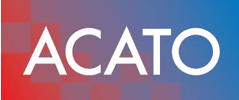
How to Execute ISO 27001 Risk Treatment Plan
Achieving ISO 27001 certification is essential for organizations focused on information security, yet many struggle with implementing an effective risk treatment plan. This blog post will guide readers through the key steps of executing an ISO 27001 Risk Treatment Plan, including how to implement controls from the ISO framework and the importance of monitoring progress. By addressing common challenges and providing clear examples, this content will empower managers and IT directors to enhance their organization’s security posture and meet effectively.
Key Takeaways
- A structured risk treatment plan enhances information security and meets compliance requirements
- Continuous risk assessment is vital for adapting to evolving cybersecurity threats
- Clear communication of the risk treatment plan fosters stakeholder support and security culture
- Assigning roles and responsibilities ensures effective implementation of ISO 27001 controls
- Utilizing real case studies can showcase the effectiveness of tailored risk management strategies
Understanding the Importance of an ISO 27001 Risk Treatment Plan

An ISO 27001 risk treatment plan is essential in managing potential threats to information security within an organization. By establishing a structured approach to identifying, assessing, and treating risks, businesses can effectively align their strategies with governance and regulatory requirements, such as the General Data Protection Regulation (GDPR). This proactive measure significantly reduces the complexity and potential impact of security failures.The integration of ISO 27001 with ISO 31000, which focuses on risk management principles and guidelines, promotes a comprehensive methodology for risk assessment and treatment. Adopting these standards allows organizations to enhance their risk governance processes, ensuring that they not only meet compliance obligations but also build stakeholders’ trust.
This alignment is crucial as organizations navigate the increasingly challenging landscape of cybersecurity threats. Establishing a robust risk treatment plan supports long-term strategic objectives by fostering a culture of security awareness and continuous improvement. Organizations benefit from ongoing assessments that adapt to evolving risks and regulatory changes. This adaptability is vital in maintaining compliance and safeguarding sensitive data in an unpredictable environment.
Recognizing the role of a risk treatment plan is just the beginning. Now, it is time to focus on the steps needed to make it work effectively.
Importance of Risk treatment in the context of UK law
In the context of UK law, risk treatment plays a critical role in the overall framework of risk management, particularly for organizations navigating complex legal landscapes. Risk treatment involves the strategic decision-making process by which businesses identify, evaluate, and prioritize risks associated with their operations, and subsequently implement measures to mitigate these risks. This process is crucial not only for compliance with various regulations, such as the Health and Safety at Work Act and the Data Protection Act, but also for safeguarding an organization’s reputation and financial stability. By proactively managing risks, businesses can avoid potential legal liabilities that may arise from negligence or non-compliance, leading to long-term sustainability.
Moreover, effective risk treatment aligns closely with the principles of corporate governance and accountability emphasized in UK law. Companies are expected to take reasonable steps to prevent harm to employees, customers, and stakeholders, which involves systematically addressing identified risks. This not only fosters a culture of safety and integrity but also enhances investor confidence as stakeholders are increasingly concerned with how organizations manage risk. In this ever-evolving regulatory environment, robust risk treatment strategies can empower businesses to respond dynamically to unforeseen challenges, ensuring they remain resilient and legally compliant. Thus, prioritizing risk treatment within a legal context is not merely a regulatory requirement but a fundamental aspect of sound business practice that can lead to improved operational effectiveness and enhanced public trust.
Importance of Risk treatment in the context of Trade with the EU Zone
Risk treatment is a critical component for businesses engaged in trade with the European Union (EU) zone, where regulations and market dynamics can be significantly different from other regions. The importance of risk treatment lies in its capacity to safeguard companies against potential financial losses, compliance penalties, and reputational damage that can arise from navigating this complex trading landscape. For instance, firms must be well-versed in tariffs, customs regulations, and quality standards set by the EU, as non-compliance can lead to delays or even bans on product entry. A proactive approach to identifying, assessing, and mitigating these risks enables businesses to develop robust strategies that enhance their market competitiveness, foster trust with partners, and ensure long-term sustainability.
Moreover, effective risk treatment not only protects against negative outcomes but also opens doors to new opportunities within the EU market. By implementing risk management frameworks tailored to the unique challenges associated with EU trade, businesses can position themselves to respond adeptly to market fluctuations or regulatory changes. This agility allows companies to capitalize on emerging trends and consumer demands, driving innovation and growth. In a realm where trade relationships are often influenced by political and economic shifts, the ability to manage risks effectively becomes a differentiating factor that can propel a business forward, paving the way for success in one of the world’s most lucrative trading zones.
Importance of Risk treatment in the context of Trade with other Commenwealth Nations
In the dynamic landscape of international trade, particularly among Commonwealth nations, the importance of risk treatment cannot be overstated. Risk treatment encompasses the strategies and processes utilized to mitigate potential threats and uncertainties that can arise from cross-border transactions. For businesses engaged in trade with Commonwealth countries, such as Canada, Australia, and India, understanding and addressing these risks is crucial for safeguarding assets and ensuring operational continuity. The interconnected nature of these economies often means that external factors—ranging from political instability to fluctuating currency values—can have far-reaching implications, necessitating a proactive approach to risk management.
Moreover, effective risk treatment fosters stronger relationships between trading partners. By demonstrating a commitment to identifying and addressing potential risks, businesses can enhance their credibility and cultivate trust with their Commonwealth counterparts. This trust is essential for long-term collaborations, as it enables smoother negotiations and reduces the likelihood of disputes. Furthermore, a well-structured risk management framework equips organizations with the agility to navigate the evolving trade landscape, helping them capitalize on emerging opportunities while minimizing adverse impacts. In sum, prioritizing risk treatment in trade with Commonwealth nations not only protects businesses from unforeseen challenges but also lays the groundwork for sustainable and mutually beneficial partnerships.
Steps to Execute an Effective ISO 27001 Risk Treatment Plan

Executing an effective ISO 27001 risk treatment plan involves several key steps that are vital for enhancing information security within an organization. First, a comprehensive risk assessment must be conducted to identify and prioritize risks, including threats such as malware. Next, developing appropriate risk treatment strategies is crucial, followed by documenting the risk treatment plan. Finally, clear communication of the plan to stakeholders ensures alignment across the organization. This structured approach supports compliance, similar to using an insurance policy, as outlined in the iso 27001 checklists.
Conduct a Comprehensive Risk Assessment
Conducting a comprehensive risk assessment is a critical initial step in executing an ISO 27001 risk treatment plan. This process requires organizations to evaluate their risk appetite, which defines the level of risk they are willing to accept while maintaining information security. Utilizing a risk assessment checklist can guide teams through identifying vulnerabilities and threats, such as those associated with inadequate authentication controls, ensuring all potential risks are documented and addressed systematically.
Identify and Prioritize Risks
Identifying and prioritizing risks is a fundamental aspect of executing an ISO 27001 risk treatment plan. Organizations must assess their resource allocations while considering the potential impact of identified risks on customer data. By integrating these insights into strategic planning, businesses can ensure that they address the highest priority threats first, effectively safeguarding their database and reinforcing adherence to compliance requirements.
- Conduct a comprehensive risk assessment to pinpoint vulnerabilities.
- Evaluate the potential impact of risks on customer data and organizational resources.
- Integrate insights from risk prioritization into broader strategic planning efforts.
Develop Appropriate Risk Treatment Strategies
Developing appropriate risk treatment strategies is a vital step in executing an ISO 27001 risk treatment plan. Organizations must understand the various options available to address identified risks, including the possibility of cyber insurance to mitigate financial impacts from incidents. Conducting a risk analysis can help organizations identify weaknesses in their infrastructure, enabling them to focus on areas where residual risk remains and design targeted strategies to fortify their security posture.
| Strategy | Description | Example |
|---|---|---|
| Risk Avoidance | Altering plans to sidestep potential risks. | Discontinuing a project that poses security threats. |
| Risk Mitigation | Implementing measures to reduce the likelihood of incidents. | Enhancing infrastructure security through improved access controls. |
| Risk Transfer | Shifting the risk to a third party. | Purchasing cyber insurance to cover potential data breach costs. |
| Risk Acceptance | Choosing to accept the risk because it is within tolerance levels. | Deciding not to invest in expensive security measures for low-impact risks. |
Document the Risk Treatment Plan
Documenting the risk treatment plan is a crucial step in executing an effective ISO 27001 risk treatment strategy. This comprehensive document should clearly outline the policies related to asset management and human resources while detailing how different risks, such as phishing, are addressed. By maintaining an organized and accessible risk treatment plan, organizations not only streamline their path to improved resilience but also ensure that all stakeholders are informed and prepared to tackle security challenges effectively.
- Conduct a comprehensive risk assessment to pinpoint vulnerabilities.
- Evaluate the potential impact of risks on customer data and organizational resources.
- Integrate insights from risk prioritization into broader strategic planning efforts.
- Develop appropriate risk treatment strategies.
- Document the risk treatment plan.
Communicate the Plan to Stakeholders
Effective communication of the risk treatment plan to stakeholders is essential in fostering a culture of compliance and security within an organization. Clearly outlining how the plan aligns with regulatory requirements and internal contracts can enhance understanding and support across teams. Furthermore, emphasizing the importance of risk management in protecting intellectual property and ensuring readiness for internal audits can motivate stakeholders to prioritize security initiatives, ultimately leading to a more resilient organization.
With a solid risk treatment plan in place, the next step is clear. Implementing controls from the ISO 27001 framework will strengthen your defenses and better protect your organization.
Implementing Controls From the ISO 27001 Framework

Implementing ISO 27001 controls involves selecting relevant methodologies that align with the organization‘s risk assessment results. Assigning clear responsibilities ensures accountability for control implementation, while training staff on security measures fosters a culture of compliance. These steps build confidence in the organization‘s audit readiness and demonstrate adherence to standards set by the International Electrotechnical Commission.
Selecting Relevant ISO 27001 Controls
Selecting relevant ISO 27001 controls requires a firm understanding of an organization’s knowledge base and specific it risk management needs. Organizations should focus on measurements that assess the effectiveness of controls while considering options like outsourcing critical tasks and implementing robust backup solutions. This tailored approach not only enhances data security but also aligns with operational objectives, ensuring that organizations can effectively navigate emerging threats in today’s digital landscape.
Assigning Responsibilities for Control Implementation
Assigning responsibilities for control implementation is a critical step in executing an ISO 27001 risk treatment plan. Organizations should designate specific personnel to oversee various aspects of security, ensuring that tasks such as maintaining physical security measures and monitoring the risk matrix are effectively managed. By involving knowledgeable team members, the likelihood of achieving accreditation and compliance with ISO standards, including ISO 22301, increases significantly.
| Role | Responsibilities | Example Task |
|---|---|---|
| Information Security Officer | Oversee implementation of security controls and policies. | Updating the risk matrix to reflect new threats. |
| IT Manager | Ensure systems and technology comply with security protocols. | Implementing technical controls for data protection. |
| Facilities Manager | Manage physical security measures and access controls. | Conducting regular audits of physical security systems. |
| Compliance Officer | Monitor compliance with ISO standards and regulatory requirements. | Reviewing documentation for accreditation readiness. |
Training Staff on Security Controls
Training staff on security controls is a fundamental aspect of executing an ISO 27001 risk treatment plan, as it directly impacts the effectiveness of information security management within an organization. Educating employees about their roles in mitigating risks helps ensure they understand the scope of security measures in place and how to protect valuable assets. Regular training sessions, which address potential threats and reinforce the importance of compliance, foster a proactive security culture where all team members contribute to safeguarding the organization‘s information and resources.
The controls in place are only as strong as their ongoing oversight. Now, the focus shifts to monitoring and reviewing the risk treatment plan, where vigilance and adaptation become vital.
Monitoring and Reviewing the Risk Treatment Plan

Establishing Key Performance Indicators (KPIs) is essential for evaluating the effectiveness of an ISO 27001 risk treatment plan. Conducting regular audits and reviews allows organizations to assess data security practices and ensure compliance with regulations regarding personal data. Based on these findings, organizations should update their risk treatment plans as part of the continual improvement process, fostering a proactive approach to managing risk management.
Establishing Key Performance Indicators
Establishing Key Performance Indicators (KPIs) is vital for monitoring the effectiveness of an ISO 27001 risk treatment plan. By focusing on metrics related to incident management and data loss, organizations can gain insights into their security posture and identify areas for improvement. For instance, a consultant can advise on incorporating standards like the Payment Card Industry Data Security Standard (PCI DSS) to enhance reputation management and ensure compliance, ultimately fortifying the organization against potential breaches. A 3rd party audit can also play a crucial role in this process.
Conducting Regular Audits and Reviews
Conducting regular audits and reviews is critical in assessing the effectiveness of an ISO 27001 risk treatment plan. By systematically evaluating security measures, organizations can identify gaps in their strategy, ensuring that practices, such as cryptography and encryption protocols, meet the standards set by the International Organization for Standardization. These audits enable organizations to mitigate risks and reinforce their information security management practices, ultimately leading to a more robust defense against evolving threats. For more information on this topic, check out other articles in our blog.
- Assess security measures regularly to identify gaps.
- Ensure compliance with International Organization for Standardization standards.
- Mitigate risks through effective cryptography and encryption protocols.
- Strengthen information security management practices.
Updating the Risk Treatment Plan Based on Findings
Updating the risk treatment plan based on findings from audits and assessments is critical to maintaining the integrity of an organization’s information security posture. Organizations should routinely examine vulnerabilities identified during reviews, adjusting access control measures and strategies to address these risks effectively. This approach not only aids compliance with international standards but also promotes ongoing standardization of security practices, ensuring that organizations remain resilient against evolving threat environment.
The plan must adapt and improve with each passing moment. Now, let’s look at real examples that show how effective ISO 27001 risk treatment can be.
Examples of Effective ISO 27001 Risk Treatment Plans

Effective ISO 27001 risk treatment plans often involve case studies where organizations successfully implemented risk mitigation strategies tailored to their unique needs. For instance, a healthcare provider, facing potential data breaches, developed a comprehensive plan that included technical controls such as strict access management and encryption methods. This proactive approach not only safeguarded patient data but also ensured compliance with national and international laws.
Another example can be seen in a financial institution, which prioritized risk transfer through the acquisition of cyber insurance. This organization identified high-impact risks associated with online transactions and documented its plan to address these, thus enhancing customer trust while managing potential financial losses related to cyber incidents. It utilized structured frameworks to define responsibilities, ensuring all personnel understood their roles in maintaining security.
A technology firm showcased the effectiveness of ongoing risk assessments as part of their ISO 27001 risk treatment plan. By regularly updating their security controls based on identified threats and organizational changes, they maintained a robust defense against evolving cyber threats. Their commitment to continuous improvement allowed them to adapt swiftly and remain compliant with international standards:
| Organization Type | Risk Treatment Strategy | Key Outcome |
|---|---|---|
| Healthcare Provider | Access management and encryption | Enhanced patient data security |
| Financial Institution | Cyber insurance acquisition | Reduction in financial risks from incidents |
| Technology Firm | Ongoing risk assessments | Adaptability to evolving threats |
Every plan carries its weight. As organizations strive to meet standards, they often face hurdles that can strain their resolve.
Common Challenges in Executing an ISO 27001 Risk Treatment Plan

Organizations often encounter challenges in gathering and analyzing the necessary data for an effective ISO 27001 risk treatment plan. Insufficient information can hinder the risk assessment process, leading to incomplete risk identification and ineffective mitigation strategies. Ensuring access to accurate and comprehensive data is essential for proper risk evaluation and decision-making.
Another common obstacle is securing stakeholder buy-in for the risk treatment plan. Resistance may arise from those who do not fully understand the importance of risk management in protecting the organization and its assets. Clear communication of the plan’s relevance to compliance and overall security is crucial to garnering support across various departments.
Resource allocation poses a significant challenge during the execution of an ISO 27001 risk treatment plan. Organizations may struggle with limited budgets or personnel, impacting their ability to implement necessary controls and training. Prioritizing risk treatment strategies and efficiently utilizing available resources is crucial for achieving effective information security management.
Which best practices speed up the risk assessment process?
In the realm of risk management, a streamlined risk assessment process is pivotal for organizations to navigate potential threats effectively and efficiently. Adopting best practices can significantly expedite this process, enabling teams to identify, analyze, and respond to risks in a timely manner. One of the key best practices involves the use of structured frameworks. Employing standardized methodologies, such as the Risk Assessment Matrix or the ISO 31000 principles, allows organizations to systematically evaluate risks without redundancy. These frameworks not only provide clarity but also facilitate collaboration among team members, ensuring that all relevant factors are considered and reducing the chances of oversight.
Additionally, leveraging technology can further enhance the speed of risk assessments. Utilizing risk management software and tools can automate data collection, analysis, and reporting, allowing teams to focus on interpreting results rather than getting bogged down in manual processes. These digital solutions can also incorporate real-time data analytics, enabling organizations to monitor risks continuously and adapt their strategies swiftly in response to emerging threats. Moreover, fostering a culture of open communication within an organization cultivates an environment where employees feel empowered to share insights and concerns about potential risks. This collective awareness not only accelerates the identification of risks but also enriches the assessment process, leading to more informed decision-making and robust risk mitigation strategies.

How risk management software help evaluate risks and develop a sustainable risk treatment?
Risk management software plays a pivotal role in helping organizations evaluate potential risks and develop sustainable risk treatment strategies. By integrating comprehensive databases and analytical tools, this software allows businesses to identify both internal and external risks that could impact their operations. Whether these risks stem from financial uncertainties, compliance issues, or operational inefficiencies, risk management software systematically aggregates relevant data and analyzes historical trends. This capability not only assists in quantifying risks but also facilitates prioritization based on their potential impact and likelihood of occurrence. Consequently, organizations are empowered to make informed decisions, ensuring that they are adequately prepared to mitigate adverse effects.
Moreover, the sustainable treatment of risks involves creating tailored mitigation strategies that align with the organization’s objectives and available resources. Risk management software provides a framework for developing these strategies, enabling risk owners to collaborate effectively on action plans. With features such as scenario analysis and risk assessment dashboards, stakeholders can visualize risk exposure and monitor the effectiveness of implemented treatments over time. The iterative nature of this process allows for ongoing adjustments and improvements, fostering a proactive risk management culture. Ultimately, by leveraging risk management software, organizations not only enhance their ability to confront emerging threats but also strengthen their resilience, thereby promoting sustainable growth and operational continuity.
What does risk management software differentiate from regular document management tools?
Risk management software serves a distinct purpose that sets it apart from conventional document management tools, primarily focusing on identifying, assessing, and mitigating potential risks within an organization. Unlike standard document management solutions, which primarily organize, store, and facilitate access to documents, risk management software is designed with specialized features and functionalities aimed at evaluating risks across various facets of a business. This type of software typically includes risk assessment frameworks, reporting tools, scenario modeling, and compliance tracking, enabling organizations to proactively manage uncertainties that could impact their operational objectives.
Furthermore, risk management software incorporates advanced analytics and risk assessment methodologies, allowing organizations to visualize potential threats and develop contingency plans. While document management tools might provide basic security features and version control, risk management solutions offer comprehensive dashboards and risk matrices that facilitate real-time decision-making. By focusing on risk and compliance in a systematic way, these dedicated systems not only enhance proactive business strategies but also support regulatory adherence, ultimately driving organizational resilience. Therefore, organizations looking to elevate their risk management capabilities should consider investing in specialized software that aligns with their risk assessment needs, rather than relying on generic document management tools.
Which risk management software are there on the market?
In today’s complex business environment, effective risk management is paramount for organizations across various sectors. As companies strive to identify, assess, and mitigate potential risks, a wide array of risk management software solutions have emerged on the market. These tools are designed to streamline the risk management process, making it easier for businesses to maintain compliance, ensure security, and promote operational efficiency. Some of the leading software options include LogicManager, RiskWatch, and RSA Archer, each offering unique features and capabilities tailored to meet diverse organizational needs.
LogicManager stands out for its user-friendly interface and robust set of functionalities, allowing organizations to manage risks on multiple levels. It provides comprehensive risk assessment tools alongside customizable dashboards that facilitate real-time monitoring. On the other hand, RiskWatch offers a flexible platform that focuses on continuous risk assessment and reporting, ideal for companies that require ongoing evaluation of their risk landscape. RSA Archer is another notable player in the market, designed for larger enterprises with complex risk management frameworks. It features extensive compliance management tools and integrations that can help organizations navigate industry regulations efficiently. In a landscape filled with options, it is imperative for businesses to carefully evaluate their specific requirements and select a solution that aligns with their strategic objectives and risk appetite.
Which types of companies can realistically benefit from costly risk management software?
In an era where businesses face an ever-evolving landscape of risks, the adoption of sophisticated risk management software becomes essential for companies navigating complex environments. Several types of organizations stand to gain significantly from investing in costly risk management solutions. Primarily, large corporations operating in heavily regulated industries—such as finance, healthcare, and energy—find these tools invaluable. These companies encounter a multitude of compliance obligations and operational risks that necessitate meticulous monitoring and reporting. Risk management software enables them to streamline their processes, ensuring they adhere to regulatory standards while mitigating potential penalties associated with non-compliance.
Furthermore, companies with intricate supply chains or those that rely heavily on data security and cyber risk mitigation also represent a prime audience for advanced risk management solutions. Industries such as manufacturing and technology are particularly vulnerable to disruptions that could arise from natural disasters, cyber-attacks, or geopolitical tensions. By leveraging robust risk management software, these organizations can perform detailed risk assessments, implement preventive measures, and maintain business continuity even in the face of unforeseen challenges. Ultimately, the strategic implementation of risk management software not only fortifies an organization’s defenses but also enhances decision-making capabilities, ultimately leading to a more resilient business model that can thrive amid uncertainty.
Should one consider Software with integrations that can evaluate the current compliance level of used cloud infrastructure?
In today’s rapidly evolving digital landscape, ensuring compliance with regulatory standards has become paramount for organizations utilizing cloud infrastructure. As businesses increasingly rely on cloud services for data storage and processing, the complexity of compliance requirements often grows exponentially. Consequently, one should consider software equipped with integrations that can evaluate the current compliance level of their cloud infrastructure. This approach not only streamlines the compliance assessment process but also allows businesses to proactively identify and mitigate potential risks associated with non-compliance.
Investing in compliance evaluation software with robust integrations can offer significant advantages. Such tools provide real-time insights into the compliance status of cloud deployments by automatically mapping existing configurations against industry standards and regulatory frameworks. This integration capability allows for continuous monitoring, enabling organizations to quickly adapt to changing compliance requirements and reduce the likelihood of costly penalties. Moreover, by leveraging software that can comprehensively assess compliance, organizations can enhance their overall risk management strategy, ensuring that their cloud infrastructure adheres to best practices while fostering trust among clients and stakeholders. In summary, the integration of compliance evaluation tools within cloud environments is not merely an option but a strategic imperative for organizations committed to maintaining regulatory compliance.

Which influence does certification have on a companies risk tretment activites?
Certification plays a pivotal role in shaping a company’s risk treatment activities, significantly enhancing its operational framework and credibility. For businesses seeking to mitigate risks, particularly in industries that require compliance with stringent regulations, obtaining relevant certifications serves as a formal acknowledgment of their adherence to recognized standards. For instance, certifications such as ISO 9001 for quality management or ISO 27001 for information security not only underscore a company’s commitment to implementing robust risk management practices but also provide a structured approach to identifying, assessing, and mitigating risks. This structured framework helps organizations systematically approach risk treatment, enabling them to deploy resources efficiently and effectively in addressing potential vulnerabilities.
Moreover, certification can impact a company’s reputation and competitive advantage in the marketplace. Clients and stakeholders increasingly favor organizations that demonstrate a commitment to best practices through certifications, perceiving them as more trustworthy and reliable. This perception can also reduce the likelihood of adverse events, as certified companies typically engage in routine audits and continuous improvement initiatives to maintain compliance with relevant standards. By embracing certification as a core element of their risk treatment strategy, companies not only enhance their operational resilience but also foster greater confidence among stakeholders, thus reinforcing their long-term viability and success in an increasingly complex risk landscape.
Does a certification audit strengthen a businesses resilience?
A certification audit plays a vital role in bolstering a business’s resilience by systematically evaluating its processes, compliance, and overall operational efficiency. During an audit, organizations are assessed against specific standards that typically relate to quality management, environmental responsibility, or information security, among others. This thorough analysis not only uncovers potential weaknesses and areas for improvement but also ensures that organizations are aligned with best practices and regulatory requirements. As a result, businesses can proactively address vulnerabilities, which is essential in today’s rapidly changing market landscape. By identifying and mitigating risks, companies can enhance their ability to withstand disruptions and adapt to unforeseen challenges, thereby fortifying their overall resilience.
Moreover, obtaining certification through a rigorous audit process can enhance a company’s reputation and stakeholder confidence. Customers, investors, and partners are increasingly looking for assurance that businesses adhere to recognized standards of excellence. A successful certification audit signals commitment to quality, safety, and sustainability, which can differentiate a business in a competitive marketplace. This trust not only fosters customer loyalty but also strengthens relationships with suppliers and regulators, creating a more robust network of support. Ultimately, by investing in certification audits, organizations lay a solid foundation for continuous improvement, fostering an agile culture that can swiftly respond to changes and uncertainties, thus reinforcing their resilience in the face of future challenges.

Why should UK businesses invest time and money in threat analysis?
In today’s rapidly evolving digital landscape, UK businesses face an array of potential threats that can significantly undermine their operations and reputation. Investing time and money in threat analysis is no longer a luxury but a necessity for organizations aiming to safeguard their assets. By conducting thorough threat assessments, businesses can identify vulnerabilities within their systems, understand the types of threats that are most likely to impact them, and implement appropriate measures to mitigate these risks. This proactive approach not only enhances their security posture but also fosters a culture of awareness and preparedness that is crucial in an age where cyber incidents are increasingly commonplace.
Moreover, the financial implications of failing to invest in threat analysis can be substantial. Data breaches or cyberattacks can lead to considerable costs, including regulatory fines, legal fees, and damage to brand reputation. By recognizing and addressing potential threats early on, businesses can minimize the risk of costly incidents and protect their bottom line. Additionally, threat analysis plays a critical role in compliance with regulations such as the General Data Protection Regulation (GDPR), making it essential for UK businesses to ensure they meet legal standards. Ultimately, by prioritizing threat analysis, organizations not only defend against immediate dangers but also strategically position themselves for long-term success in a competitive market.
Is threat evaluation a legal requirement in the UK?
In the UK, the concept of threat evaluation plays a pivotal role in various fields, particularly within the realms of workplace safety, public protection, and national security. While there is no singular legal requirement explicitly stating that threat evaluations must be conducted, several laws and regulations necessitate risk assessments that implicitly incorporate threat evaluation principles. For instance, the Health and Safety at Work Act 1974 mandates employers to ensure, as far as reasonably practicable, the safety and welfare of their employees and others affected by their work activities. This legal framework recognises that assessing potential threats—whether they manifest as physical hazards, potential violence, or operational vulnerabilities—is integral to maintaining a secure working environment.
Furthermore, specific sectors may be subject to additional regulations that require more rigorous threat assessments. For instance, organizations handling sensitive information or those in sectors critical to national infrastructure, such as healthcare and finance, often must adhere to the principles outlined in the Counter-Terrorism and Security Act 2015 and the Data Protection Act 2018. These regulations create a pressing need for threat evaluations to safeguard not only employees but also the broader public and national interests. Thus, while threat evaluation itself may not be explicitly defined as a legal requirement, its underlying principles are embedded within various statutory obligations, ensuring that organizations proactively assess and mitigate potential threats in their operational environments.
Is threat evaluation a legal requirement for business clients in the EU zone?
In the evolving landscape of data protection and cybersecurity, businesses operating within the European Union (EU) must navigate a complex framework of legal requirements. One critical aspect of this framework is the process of threat evaluation. This procedure is not merely a best practice; it has become increasingly viewed as a legal requirement, particularly in light of the General Data Protection Regulation (GDPR) and the Network and Information Systems (NIS) Directive. The GDPR mandates that businesses implement appropriate technical and organizational measures to ensure a level of security appropriate to the risk. This includes the necessity for organizations to assess potential vulnerabilities and threats to their data processing activities, thereby underscoring the duty of care owed to clients and stakeholders.
Moreover, the NIS Directive further reinforces the importance of assessing and mitigating risks. It requires essential service providers and digital service providers to adopt risk management practices that include threat evaluations as part of their overall cybersecurity strategy. Consequently, failure to conduct proper risk assessments can lead to significant legal ramifications, including hefty fines and reputational damage. For business clients in the EU, engaging in thorough threat evaluation not only aligns with regulatory compliance but also strengthens their resilience against cyber threats. Therefore, it is essential for organizations to integrate threat evaluation as an ongoing component of their risk management strategy, ensuring they remain compliant and prepared in an increasingly digital world.

How will the EU AI Act influence Risk treatment plan execution?
The EU AI Act, a landmark piece of legislation, is poised to significantly influence the execution of risk treatment plans across organizations that utilize artificial intelligence. By imposing rigorous compliance standards and risk assessment protocols, the Act obliges businesses to evaluate the potential hazards associated with AI systems throughout their lifecycle. This means that organizations will need to incorporate a more structured approach to risk management, not only to adhere to regulatory frameworks but also to foster trust among stakeholders. As organizations align their risk treatment plans with the provisions of the Act, they will likely need to enhance their operational processes, invest in training, and develop comprehensive documentation that details their risk mitigation strategies.
Moreover, the EU AI Act emphasizes transparency and accountability, which are crucial elements in the management of AI-related risks. Companies will be required to assess the impact of their AI systems on user rights and societal norms, which may necessitate a more proactive stance in addressing ethical concerns and potential biases that arise from AI algorithms. This shift will prompt organizations to adopt continuous monitoring and iterative risk treatment strategies, ensuring that they remain compliant as new standards emerge. In doing so, they will not only be better equipped to handle regulatory pressures but also enhance their overall risk posture by prioritizing responsible AI development and deployment. This compliance-driven culture may also catalyze a broader industry shift towards more ethical AI practices, ultimately benefiting consumers and society at large.
Will an ISO 27001 risk treatment plan be sufficient for the EU AI Act?
As organizations increasingly adopt artificial intelligence technologies, regulatory frameworks such as the EU AI Act become essential. A key aspect of compliance with this act is the necessity for a structured approach to managing risks associated with AI systems. While an ISO 27001 risk treatment plan establishes a solid foundation for managing information security risks, its applicability to the EU AI Act requires careful consideration. ISO 27001 focuses primarily on establishing an Information Security Management System (ISMS), designed to manage and protect sensitive data. However, the EU AI Act encompasses broader dimensions, including safety, ethics, transparency, and accountability, specifically tailored to address the unique challenges presented by AI technologies.
Although an ISO 27001 risk treatment plan may form part of the compliance strategy for the EU AI Act, it alone may not be sufficient. Organizations must enhance their risk management frameworks to incorporate components that directly relate to the specific requirements of the AI Act. This may include conducting thorough risk assessments that consider the potential societal impacts of AI systems, ensuring transparency and explainability of AI algorithms, and establishing auditing mechanisms to enhance accountability. Therefore, while the ISO 27001 framework provides valuable guidance on managing information security risks, organizations must take a broader approach to risk treatment that aligns with the EU AI Act’s objectives, ensuring comprehensive compliance and fostering trust in their AI solutions.
Is the ISO 27001 risk treatment approach different from its US counterpart SOC 2?
When comparing ISO 27001 and SOC 2, one key distinction lies in their respective risk treatment approaches. ISO 27001, an international standard for information security management systems (ISMS), emphasizes a structured and comprehensive risk management framework. Organizations adopting ISO 27001 are required to conduct a thorough risk assessment, which helps identify, evaluate, and prioritize risks based on their potential impact. Subsequently, organizations must develop a risk treatment plan to mitigate those risks through a range of controls — which may include administrative, technical, or physical measures. This holistic approach not only ensures compliance with the standard but also fosters a culture of continuous improvement in information security practices.
In contrast, SOC 2, developed by the American Institute of Certified Public Accountants (AICPA), primarily focuses on the operational and security controls relevant to service organizations, particularly those that handle customer data. While SOC 2 requires a risk assessment, it does not prescribe a specific methodology for risk treatment like ISO 27001. Instead, SOC 2 allows organizations to select controls based on the Trust Services Criteria (security, availability, processing integrity, confidentiality, and privacy), offering a more flexible framework. This means that while both standards aim to ensure the security and integrity of information, the approach to risk treatment can vary significantly. ISO 27001 provides a rigorous, standardized method, whereas SOC 2 grants organizations the autonomy to tailor their controls based on specific business contexts and customer expectations.

Will a SOC 2 Certificate satisfy the NIS 2 directive requirements?
The NIS 2 Directive, which aims to enhance cybersecurity across the European Union, sets forth stringent requirements for essential and important entities operating within the digital landscape. Organizations that achieve a SOC 2 (System and Organization Control 2) certification demonstrate their commitment to managing customer data effectively and securely, showcasing established controls around security, availability, processing integrity, confidentiality, and privacy. However, while a SOC 2 certification highlights an organization’s capabilities in handling data and mitigating risks, it does not fully satisfy the NIS 2 directive requirements.
The NIS 2 Directive necessitates a broader framework of compliance that encompasses not only data protection but also operational resilience and incident response protocols, reflecting a more comprehensive approach to cybersecurity. Entities seeking to comply with NIS 2 must ensure they meet specific obligations around risk management practices, the reporting of incidents, and maintaining business continuity plans. While a SOC 2 certification might facilitate some of the necessary process documentation and evidence of stringent security practices, organizations must conduct additional assessments and implement specific measures to align fully with the NIS 2 requirements. In summary, while SOC 2 certification is beneficial and can be part of a broader compliance strategy, it alone does not fulfill the full scope of what the NIS 2 directive entails.
How could organizations using AI be complient by also adopting ISO 42001 risk assessment?
In the rapidly evolving landscape of artificial intelligence (AI), organizations face the dual challenge of harnessing innovative technologies while ensuring compliance with established standards. ISO 42001, which focuses on the effective management of risks associated with AI systems, provides a framework that allows organizations to navigate this complex terrain. By adopting ISO 42001, organizations can implement a structured risk assessment approach that identifies, evaluates, and mitigates potential risks related to data privacy, ethical considerations, and algorithmic bias. This compliance not only enhances the integrity of AI implementations but also fosters stakeholder trust, demonstrating a commitment to responsible AI usage.
Furthermore, integrating AI with the principles outlined in ISO 42001 encourages a culture of continuous improvement and proactive risk management. Organizations can leverage AI capabilities to enhance their risk assessment processes, utilizing data analytics and machine learning to identify emerging risks more efficiently and accurately. By continuously monitoring AI systems and their outputs, organizations can adapt their strategies in real-time, ensuring compliance without stifling innovation. Ultimately, the synergy between AI and ISO 42001 not only positions organizations as responsible technology leaders but also aligns them with global best practices, paving the way for sustainable and ethical AI deployment.
What kind of integrity of AI implementations is expected by the EU AI Act?
The EU AI Act is a groundbreaking legislative framework aiming to regulate the development and deployment of artificial intelligence systems within European Union member states. One of its core mandates is to ensure that AI implementations uphold a high standard of integrity. This involves several key principles, including transparency, accountability, and robustness. The legislation emphasizes the need for AI systems to function in a manner that is not only reliable but also predictable, allowing users and affected parties to benefit from an understandable decision-making process. Transparency is particularly vital, as it enables stakeholders to comprehend how AI algorithms arrive at conclusions, which fosters trust and ensures ethical application.
Moreover, the EU AI Act outlines stringent requirements for risk management, categorizing AI applications based on their risk levels—ranging from minimal to unacceptable. High-risk AI systems must undergo rigorous assessments to confirm that they meet predetermined safety standards. This integrity extends to the performance of AI systems, necessitating regular monitoring and updates to mitigate biases and ensure equitable outcomes. By mandating such measures, the EU AI Act aims to create a balanced ecosystem where innovation can thrive alongside ethical considerations, ultimately guiding the responsible adoption of AI technologies throughout the European Union.
Is a ISO 31000 certification necessary, too?
ISO 31000 certification is often a topic of discussion among organizations looking to enhance their risk management frameworks. The ISO 31000 standard provides guidelines on risk management principles and implementation, enabling organizations to create a structured approach to identifying, assessing, and managing risks. However, the necessity of certification depends on various factors, such as the organization’s size, industry, and regulatory requirements. While obtaining ISO 31000 certification can demonstrate a commitment to best practices and improve an organization’s credibility, it is not a mandatory requirement like some other ISO standards.
For many organizations, the real value of implementing ISO 31000 lies in incorporating its principles into their risk management processes rather than pursuing formal certification. By embedding these guidelines into their operations, companies can enjoy improved decision-making capabilities, enhanced stakeholder confidence, and a more resilient organizational culture. Ultimately, whether or not to pursue certification should be based on the organization’s goals, its regulatory environment, and the potential benefits of demonstrating adherence to an internationally recognized standard for risk management.
Conclusion
Effectively executing an ISO 27001 risk treatment plan is crucial for safeguarding an organization’s information security and ensuring compliance with regulatory requirements. By conducting thorough risk assessments and prioritizing risks, businesses can develop targeted strategies that bolster their security posture. Clear communication and ongoing training promote a culture of security awareness among stakeholders, enhancing adherence to established protocols. Ultimately, a well-implemented risk treatment plan not only protects sensitive data but also builds trust among clients and partners, demonstrating the organization‘s commitment to information security.
